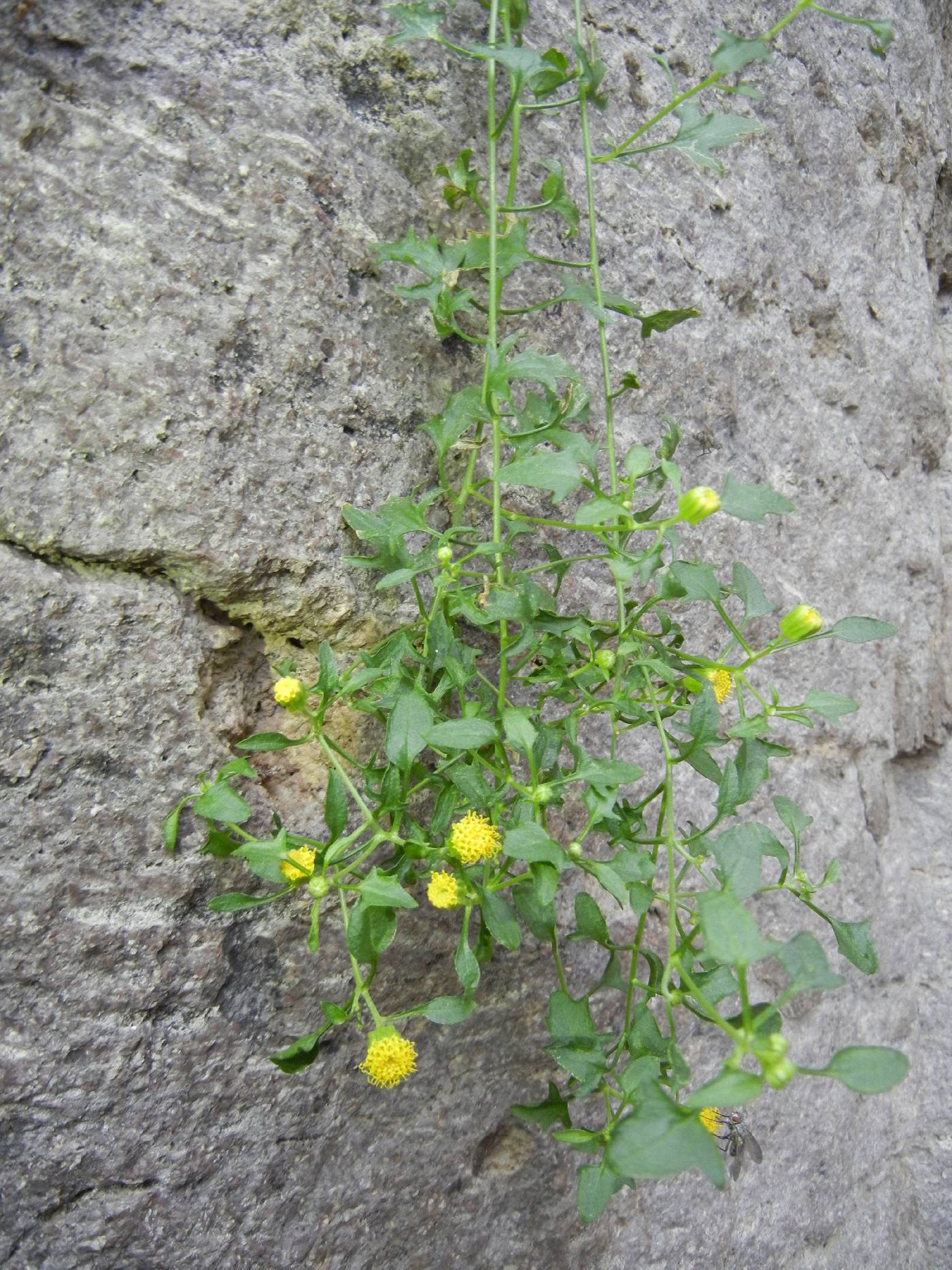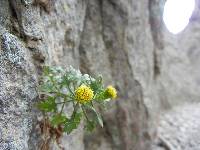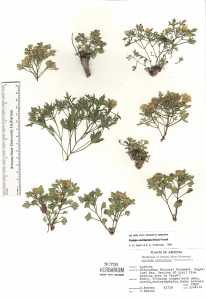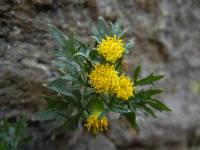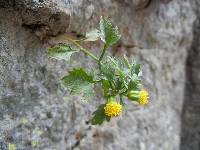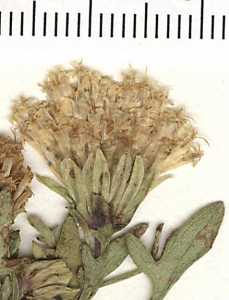Perityle cochisensis
|
|
|
|
Family: Asteraceae
Cochise Rockdaisy
[Laphamia cochisensis Niles] |
Perennials or subshrubs, 4-12(-15+) cm (usually erect, compact, sometimes spreading, moderately to densely leafy); usually glabrate, sometimes sparsely or densely short-hairy, rarely sparsely villous. Leaves: petioles 5-30 mm (usually equal to or longer than blades); blades deltate-orbiculate, ovate, or subdeltate, 5-27 × 6-27 mm, irregularly lobed, lobes 3-5, ultimate margins serrate or lobed. Heads usually borne singly, 8-10 × ca. 10 mm. Peduncles 5-10 mm. Involucres broadly campanulate to hemispheric. Phyllaries 12-22, lanceolate to ovate, 4.5-6.5 × 1-2.5 mm. Ray florets 0. Disc florets 30-45(-60); corollas yellow, tubes 0.8-1 mm, throats funnelform to narrowly campanulate, 1.8-2 mm, lobes 0.6-0.8 mm. Cypselae oblong to narrowly oblanceolate, 2.5-3 mm, margins thin-calloused, sparsely short-ciliate; pappi usually of 1(-2) unequal, distally subplumose bristles 2-2.5 mm, sometimes 0. 2n = 34. Flowering spring-fall. Granite rock crevices in canyons; of conservation concern; 1500-2100 m; Ariz. Perityle cochisensis is known only from the Chiricahua Mountains of southeastern Arizona. Some collections of P. lemmonii from the Big Hatchet Mountains of Hidalgo County in southwestern New Mexico may have petioles approaching the length of the blades as in P. cochisensis. The densely pilose or villous induments of those New Mexican plants is similar to that of P. lemmonii.
FNA 2006, Kearney and Peebles 1969 Duration: Perennial Nativity: Native Lifeform: Subshrub General: Perennial herbs or subshrubs, to 12 cm tall, usually erect, compact, sometimes spreading, moderately to densely leafy, usually glabrate, sometimes sparsely or densely short-hairy, rarely sparsely villous. Leaves: Opposite, deltate-orbiculate, ovate, or subdeltate, to 27 mm long and 27 mm wide, irregularly lobed, the lobes 3-5, the ultimate margins serrate or lobed. Flowers: Heads small, discoid, disk flowers yellow, 30-45 or more, involucres broadly campanulate to hemispheric, phyllaries 12-22, lanceolate to ovate, 4.5-6.5 mm long and 1-2.5 mm wide, heads usually solitary. Fruits: Achenes strongly compressed, 2.5-3 mm, oblong to narrowly oblanceolate, margins thin-calloused, sparsely short-ciliates. Pappus of 1-2 subplumose awns (these sometimes absent), and a crown of squamellae. Ecology: Found in granite rock crevices in canyons, from 5,000-7,000 ft (1524-2134 m); flowering spring-fall. Distribution: Arizona only. Ethnobotany: Unknown Etymology: Perityle comes from Greek peri, around and tyle, a callus, which refers to the thick callused margin of the cypselae, while cochisensis is an honorific for the great Apache leader Cochise. Synonyms: Laphamia cochisensis W.E. Niles Editor: LCrumbacher 2011 |

